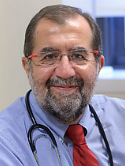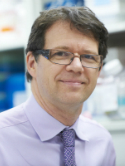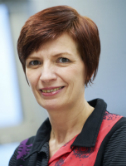Stem cell engineering for the treatment of severe hemoglobinopathies Journal Article
| Authors: | Sadelain, M.; Boulad, F.; Lisowski, L.; Moi, P.; Riviere, I. |
| Article Title: | Stem cell engineering for the treatment of severe hemoglobinopathies |
| Abstract: | The β-thalassemias and sickle cell anemia are severe congenital anemias for which there is presently no curative therapy other than allogeneic bone marrow transplantation. This therapeutic option, however, is not available to most patients due to the lack of an HLA-matched bone marrow donor. Emerging modalities based on cell engineering offer new prospects for potentially curative approaches that are applicable to more patients. The first is based on the transfer of a regulated globin gene in autologous hematopoietic stem cells (HSCs). This strategy, simple in principle, raises major challenges in terms of controlling transgene expression, which ideally should be erythroid-specific, differentiation and stage-restricted, elevated, position-independent, and sustained over time. Following the original report by May et al., several groups have reported that lentiviral vectors encoding slightly different combinations of proximal and distal transcriptional control elements of the normal human β-globin gene permit lineage-specific and elevated β-globin expression in vivo, resulting in therapeutic hemoglobin production and correction of anemia in β-thalassemic mice. Clinical studies utilizing the TNS.3 vector are likely to be initiated in the US in 2009. While the addition of the wild-type β-globin gene is naturally suited for treating β-thalassemia, several alternatives have been proposed for the treatment of sickle cell disease, using either γ- or mutant β-globin gene addition, trans-splicing or RNA interference. The recent discovery that adult somatic cells can be reprogrammed to become pluripotent stem cells from which HSCs can be derived, provides yet another venue for developing stem cell engineering using either lentiviral vectors or homologous recombination techniques. Altogether, these recent advances bode well for the advent of curative stem cell-based therapies. © 2008 Bentham Science Publishers Ltd. |
| Keywords: | leukemia; genetics; busulfan; clinical trial; review; cancer risk; drug efficacy; nonhuman; disease free survival; methodology; cytology; gene targeting; mus; somatic cell; gene expression; cell maturation; erythropoiesis; embryonic stem cell; rna interference; hemoglobin; melphalan; allogenic bone marrow transplantation; hematopoietic stem cell transplantation; in vivo study; cell differentiation; drug effect; drug synthesis; viral gene delivery system; survival time; disease severity; engraftment; hla matching; genetic recombination; transcription regulation; genomic instability; gene therapy; globin; lentivirus vector; retrovirus vector; beta thalassemia; graft versus host reaction; stem cell gene therapy; transgene; hematopoietic stem cells; allogeneic hematopoietic stem cell transplantation; gene control; pluripotent stem cell; hematopoietic stem cell; virus recombinant; virus replication; immune deficiency; tissue engineering; autologous hematopoietic stem cell transplantation; rna splicing; transposon; globins; nonviral gene delivery system; nonviral gene therapy; beta globin; alpha thalassemia; hemoglobinopathy; retroposon; gamma radiation; sickle cell anemia; gamma globin; hemoglobinopathies; bioengineering; ribozyme; hemoglobin synthesis; alpha globin; cell nucleus transplantation |
| Journal Title: | Current Molecular Medicine |
| Volume: | 8 |
| Issue: | 7 |
| ISSN: | 1566-5240 |
| Publisher: | Bentham Science Publishers |
| Date Published: | 2008-11-01 |
| Start Page: | 690 |
| End Page: | 697 |
| Language: | English |
| DOI: | 10.2174/156652408786241357 |
| PUBMED: | 18991654 |
| PROVIDER: | scopus |
| DOI/URL: | |
| Notes: | --- - "Cited By (since 1996): 11" - "Export Date: 17 November 2011" - "CODEN: CMMUB" - "Source: Scopus" |
Altmetric
Citation Impact
BMJ Impact Analytics
Related MSK Work






